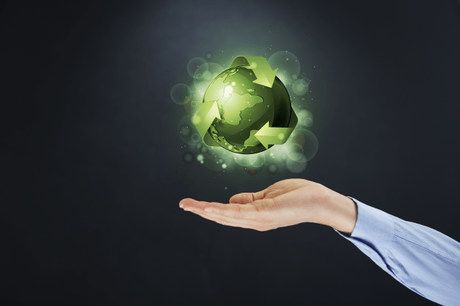Waste management is made up of collecting, transporting, processing and recycling/disposing of waste materials. Waste management services are designed to tackle the disposal and removal of industrial waste in tandem with the regulations in an economic and timely manner with the help of industrial balers, commercial trash compactors, and recycling equipment. Waste management has become a lot more important due to an increased understanding of the positive impact of recycling on the environment and economy.

These are the services that professional waste management companies offer:
● Waste Removal
● Recycling
● Trusted Waste Disposal
● Contaminated Waste Disposal
Here are 5 Steps for Proper Waste Management for Your Business:
Step 1
A sustainable materials management plan is when your business decides on how the materials it uses should flow. This management plan also has certain ways of dealing with waste materials after they have been used in the production process. Some of these ways are:
● Disposal
● Treatment
● Recycling
● Transfer
● Collection
● Recovery
● Segregation between the recyclable items and organic items
● Generation
● Reuse
● Prevention
These are the main areas incorporated into effective resource management:
● Organic and Food Waste Recovery
● Commercial Recycling
● Single Stream Recycling
You can opt to buy eco-friendly products to make recycling waste easier by opting for compostable packaging materials and use paper bags rather than plastic bags.
You can also measure your company’s waste by checking how full your bins are prior to them being taken away by the collection truck. Their sizes don’t matter, write down how full your bins are and how often the waste is collected. Collecting and collating this information will help you understand how much waste your business produces in a given time period.
Step 2
Take a collaborative approach in resource management planning. The main aim of this approach is to support and increase the partnerships between the local governments and your business to support the co-operation in recycling and waste management systems between public and private stakeholders that work towards more efficient recycling of waste.
You can further introduce a waste reduction program to improve communication and co-operation amongst your staff about reducing waste.
Step 3
Separate the different types of waste so that you know what items in your trash are recyclable or reusable. You can separate them by having separate bins for the waste that is to be recycled the waste that is headed to the landfill.
Step 4
Knowing how much waste material your business generates in a given timeframe along with the types of materials that can be diverted from the landfill helps you identify which contractors are the most suited for your waste and recycling needs.
Step 5
How you choose to separate your waste materials is controlled by how you choose to collect your waste. This requires clear signage and communication to ensure that your business implements an effective recycling system.
Understanding What Recycling Equipment is Best for Your Business
A lot of business owners struggle with choosing the right kind of recycling equipment for their business. Here are some guidelines to help you better understand the differences between recycling and waste disposal:
1. Difference Between Industrial Balers and Commercial Trash Compactors
Industrial balers and commercial trash compactors are two different types of equipment that your company can choose from to increase its recycling and disposal efficiency. But both compactors and balers have their own purposes which you should be aware of.
a.) Industrial Balers
Take into account the material that needs to be bailed, the amount of material that has to be bailed and your required bale weights while choosing your baler. Each baler has its own set of specifications according to how big or small the recycling operations are. The lifespan of your baler will increase if you use it to bale material weights it was intended to.
b.) Commercial Trash Compactors
These heavy duty machines are designed to compress large amounts of waste into impressively small amounts which can be collected, and disposed or recycled quite easily later on. Compactors are great equipment for your company if you are looking to reduce the volume of your waste in a quick and effective way.
2. 4 Factors to Consider When Choosing Your Recycling Equipment:
a.) Business Needs
Your recycling equipment should be able to meet your waste disposal and recycling needs. It is best to identify the type of waste your company generates and what quantities it is generated in. Dry waste may also require the use of different kinds of equipment as compared to wet waste. Ask yourself what type of waste your company produces and how big are the pieces of waste generated by your company that fit into the balers or compactors.
b.) Evaluate Your Business Budget
After choosing the recycling and waste equipment that is best suited for your business, you will have to set a budget to buy the machinery. The equipment must include warranty options, customer service after sales, installation and preventive maintenance plans. You can also choose between buying, renting or leasing your recycling equipment depending on your company’s budget.
c.) Check For Resource Efficiency
The equipment you purchase should help your company attain the level of resource efficiency that you are looking for. Do your research on how much efficiency you will be able to attain with your equipment of choice prior to purchasing it. It is best to choose high efficiency if you want to increase the speed of your processes.
d.) Post Purchase Considerations
Make sure that the equipment that you decide on for your business is within your company’s budget. Your purchase must provide a warranty, customer service after your purchase, preventive maintenance plans and installations. Deciding whether it is more advantageous for your business to purchase, rent or lease your recycling equipment depends largely on your company’s cash flow, assets and fiscal projections

